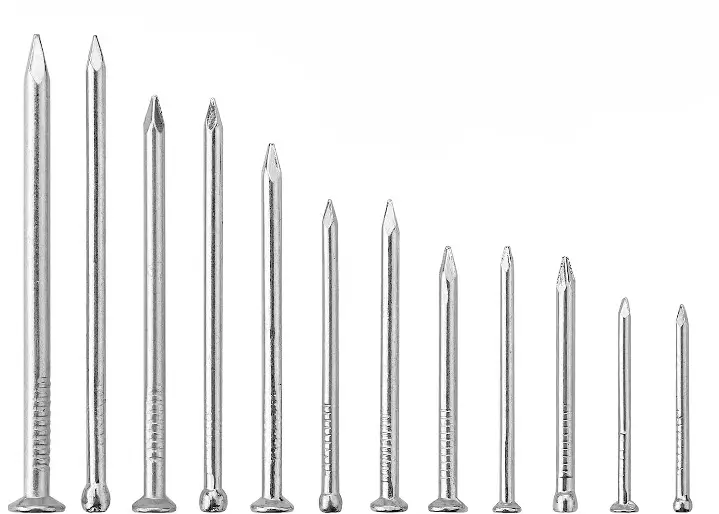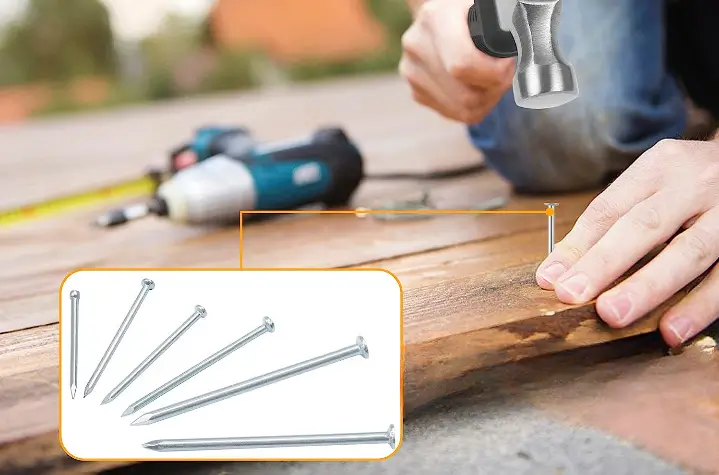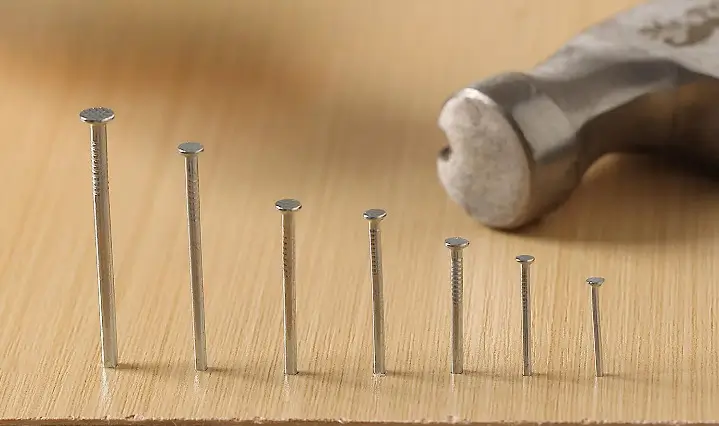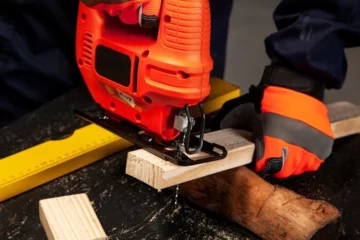Unlock the secrets to flawless woodworking and construction with our ultimate Nailer Gauge Chart guide! If you’ve ever struggled to choose the perfect nail size for your projects, fret no more. Understanding nailer gauges is the key to precision and durability.
In this comprehensive blog post, we’ll reveal the mysteries behind nail gauges and their applications. From expert tips to practical examples, you’ll be equipped to achieve nailing success like never before.
What is a Nail Gauge
Imagine nails are like straws of different thicknesses. A nail gauge is like a special number that tells us how thick or thin the straw (nail) is. The smaller the number, the thicker and stronger the nail. The bigger the number, the thinner and lighter the nail.
So, a small number like “6” means a thick and strong nail, like a big straw. A big number like “20” means a thin and light nail, like a small straw.
Knowing the nail gauge helps us pick the right nail for the job. For big, tough jobs, we need thick nails (small gauge numbers), and for smaller, delicate jobs, we use thinner nails (big gauge numbers).
Nailer Gauge Chart (Common Nails)
| Penny Size | Gauge | Shank Diameter | Shank Length | Head Diameter |
| 2d nails | 15 | 0.072 | 1“ | 3/16“ |
| 2d nails | 14 | 0.083 | 1″ | 13/64″ |
| 3d nails | 14 | 0.083 | 1.25″ | 13/64″ |
| 4d nails | 12 | 0.109 | 1.5″ | 1/4″ |
| 5d nails | 12 | 0.109 | 1.75″ | 1/4″ |
| 6d nails | 11 | 0.12 | 2″ | 17/64″ |
| 8d nails | 10 | 0.134 | 2.5″ | 9/32″ |
| 10d nails | 9 | 0.148 | 3″ | 5/16″ |
| 12d nails | 9 | 0.148 | 3.25″ | 5/16″ |
| 16d nails | 8 | 0.165 | 3.5″ | 11/32″ |
| 20d nails | 6 | 0.203 | 4″ | 13/32″ |
| 30d nails | 5 | 0.22 | 4.5″ | 7/16″ |
| 40d nails | 4 | 0.238 | 5″ | 15/32″ |
| 60d nails | 4 | 0.238 | 6″ | 17/32″ |
Nailer Gauge Char (Box Nails)
| Penny Size | Gauge | Shank Diameter | Shank Length |
| 3d | 14.5 | 0.076 | 1.25″ |
| 4d | 14 | 0.080 | 1.5″ |
| 5d | 14 | 0.080 | 1.75″ |
| 6d | 12.5 | 0.098 | 2″ |
| 7d | 12.5 | 0.098 | 2.25” |
| 8d | 11.5 | 0.113 | 2.5″ |
| 10d | 10.5 | 0.128 | 3″ |
| 16d | 10 | 0.135 | 3.5″ |
| 20d | 9 | 0.148 | 4″ |
Why It Is Important to Know the Nail Gauge Chart
Knowing the Nail Gauge Chart is essential because it helps us choose the right nail for different tasks. Here’s why it’s important:

- The chart shows us which nail size to use for specific jobs. Using the wrong size could lead to weak or damaged structures.
- The chart helps us pick the right thickness of nails for strong and lasting connections. Thicker nails hold things better than thinner ones.
- Using the correct gauge prevents nails from splitting wood or causing damage to delicate materials.
- By knowing the right nail size, we avoid wasting time and money on the wrong nails for the job.
- Choosing the appropriate nail gauge ensures a secure and safe construction, reducing the risk of accidents or collapses.
- Professional Results: With the right nail size, our projects look neat and professional, impressing others with our skills.
Common Nailer Gauges and Their Best Uses
Different nailer gauges have their unique characteristics and best uses, catering to various woodworking and construction tasks. Here are some common nailer gauges and their best applications:

1. 8 Gauge Nails
Ideal for delicate trim work, 18-gauge nails are thinner and leave smaller holes, making them perfect for finishing carpentry. They are often used for attaching baseboards, crown moldings, and window casings. These nails offer good holding power for lighter materials and are less likely to split wood.
2. 16 Gauge Nails
Known for their strength and versatility, 16-gauge nails are suitable for a wide range of applications. From framing to baseboards, they can handle various tasks with ease. These nails provide excellent holding power and are commonly used in construction projects and general woodworking.
3. 15 Gauge Nails
Offering a balance between strength and finesse, 15-gauge nails are often chosen for heavy crown moldings, door frames, and window frames. They provide more holding power compared to 18 or 16-gauge nails and work well with hardwoods and medium-density fiberboard (MDF).
4. 23 Gauge Nails
These super-thin nails are perfect for delicate woodworking projects, such as attaching delicate trims, glazing beads, and other small wood pieces. The small holes left by 23-gauge nails are easy to conceal, making them an excellent choice for fine finishing work.
5. 12 Gauge Nails
When it comes to heavy-duty applications and structural framing, 12-gauge nails are the go-to choice. Their thickness and strength make them suitable for constructing decks, fences, and other load-bearing structures.
Conclusion
Understanding the Nailer Gauge Chart is the key to achieving precision and durability in woodworking and construction projects. By knowing the right nail size for each task, you can ensure strength, efficiency, and safety. From delicate trim work with 18-gauge nails to heavy-duty framing with 12-gauge nails, the chart provides valuable guidance for achieving professional results.
So, unlock the secrets to nailing success, elevate your skills, and take your projects to new heights with the power of Nailer Gauge Charts! Happy woodworking!
FAQs
Which is better 15 gauge or 16 gauge Nialer?
The 15 gauge nailer is better for heavy-duty applications, while the 16 gauge nailer is ideal for versatile tasks.
Which is better 16 gauge or 18 gauge Nialer?
The 16 gauge nailer offers more holding power than the 18 gauge nailer, which is better suited for delicate trim work.
How thick 15 gauge is nails?
15 gauge nails are approximately 0.072 inches thick.
What are 14 gauge nails used for?
14 gauge nails are commonly used for framing and other construction applications.
Is 18 gauge nail is good for trim?
Yes, 18 gauge nails are excellent for trim work due to their smaller size and minimal visibility.



